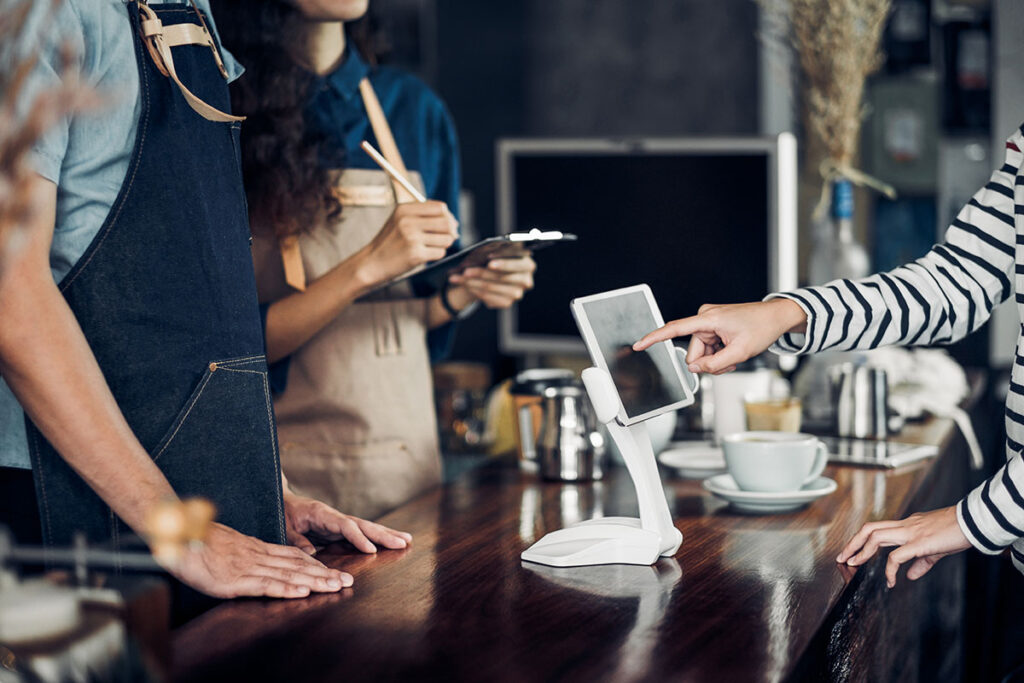Ghost kitchen this, BOPIS that, drive-thru now, sit down later. You’ve heard the terms, but why, after decades of the same, are restaurants now reinventing themselves on the fly?
The truth is that for restaurants to be successful in today’s climate, they must continue to evolve to meet consumer demands, while also reacting to the unexpected (pandemic, anyone?). Of course, there are many other factors as well, including quelling labor shortages, meeting diners’ demands for global flavors, and offering patrons multiple ways to order, eat, and engage. To survive in this always-morphing industry, restaurants need to be agile, flexible, and ready to reinvent. Enter the “flexaurant.”

Agility in QSR and Fast Casual
Quick-serve and fast-casual restaurants are still important categories, but they are having to adjust the most. One of the most important ways these restaurants can be more agile is by implementing the right technology.
What technology should QSR and fast casual restaurants consider? For many, it’s more a matter of keeping the technology they introduced during the pandemic and accelerating adoption of the tech as a matter of course.
According to Hospitality Insights, the following top the list of popular restaurant tech today:
- Online ordering and delivery systems and apps
- Contactless payments
- Online table reservation systems
- Digital kitchen boards, which automate the process from order through cooking
- Automated inventory management
- QR codes
- Air purification technology
These technologies not only address labor shortages by making it easier for existing staff to work more efficiently, but also address health and safety concerns that linger from the pandemic.
Catering To A Global Palatte
It’s not just high-end restaurants whose menus are shifting to recognize the changing influence in what people want to eat. Thanks to TikTok and a couple of years of experimenting in the kitchen during the pandemic, consumers are looking for tastes that excite them, even in their fast-casual dining experiences. They want global flavors, unique combinations, and interesting ingredients. Here are the top food trends restaurants should consider, according to The Wicked Noodle:
- Mood food – Foods and cocktails infused with THC or CBD have been slowly becoming more popular menu items as cannabis legalization has spread to nearly half the states.
- “Swicy” food – Foods that are both sweet and spicy are going from trending to viral. In grocery stores and on restaurant menus, choices like sweet chili and hot honey are in high demand.
- Non–alcoholic beverages – Going beyond the Shirley Temple, today’s non-alcoholic drinks are sophisticated and flavorful, without the spirits.
- Mushrooms– Mushrooms not only get a second look not only because of the unique flavors they can add to dishes, but also because they are a sustainable food choice, which is a high priority among younger generations.
- International flavors – Consumers are far more eager to try international flavors that they’ve been exposed to online, including Korean barbecue, Indian and Japanese curries, and other international tastes.
- Meatless meals – From plant-based meats to vegan and vegetarian menu options, more consumers are moving away from the traditional meat-and-potatoes fare.

Buying Back and Paying Forward
Gen Z, the digital-native generation coming into financial power, is leading the charge when it comes to influencing food trends. They are impacting every area of retail, from travel and luxury to the restaurant industry. These younger consumers view restaurants differently than generations before them. According to The National Restaurant Association,
“Younger generations view restaurants as a partner in their at-home meal prep. It’s no longer a simple binary choice between a restaurant meal and home cooking. More than half the adults surveyed for the 2022 State of the Restaurant Industry report say they are more likely to incorporate restaurant-prepared items into meals made at home than they were before the pandemic. This is particularly popular with Gen Zs and Millennials, with more than 70% indicating increased reliance on mixed meals.”[
- The National Restaurant Association
But it’s more than just that they’re most likely to incorporate restaurant food into their meals; it’s that they rely on restaurants as an integral partner in their overall sustenance plan. And for Gen Z, food is often a shared experience and a social one, so catering to their desire for unique and interesting food in a fun and engaging setting where they can relax and enjoy time with friends can set a restaurant apart.
Winning restaurants will keep an eye on Gen Z and follow their lead when flexing in a new way.

Make Eating A Sensory Experience
Many QSRs and fast casual establishments understand the importance of appealing to customers’ sense of smell. And while the trend toward a multi-sensory experience happening in fine dining establishments isn’t achievable at a fast-casual price point, understanding that a sensory experience goes beyond smell can help any restaurant deliver a better experience for their customers—and a unique one to boot.
A great example is Kew Gardens in London, where dining is an adventure for the whole family. At this restaurant, “families can learn about the journey of food from plant to plate, with stories brought to life through interactive LED push buttons and infinity mirror periscopes.”[

Restaurant Design Takes a Front Seat in Delivering the Right Experience
Fast casual and QSR dining are mainstays – they are part of the American fabric. But to continue to attract customers and keep them coming back, they need to be willing to listen more carefully to what consumers want—and be ready to adjust their course along the way.
To be successful in today’s competitive restaurant industry, restaurants must make regular menu updates, make a commitment to sustainability and variety, and implement the technology needed to create the kind of experience that makes guests feel like they are part of the brand’s family—whether they’re eating in or bring the food home to share.
Being a “flexaurant” isn’t just about the menu; it’s also about making sure the menu reflects what today’s consumer seeks—and then creating an atmosphere that excites and brings diners back.





